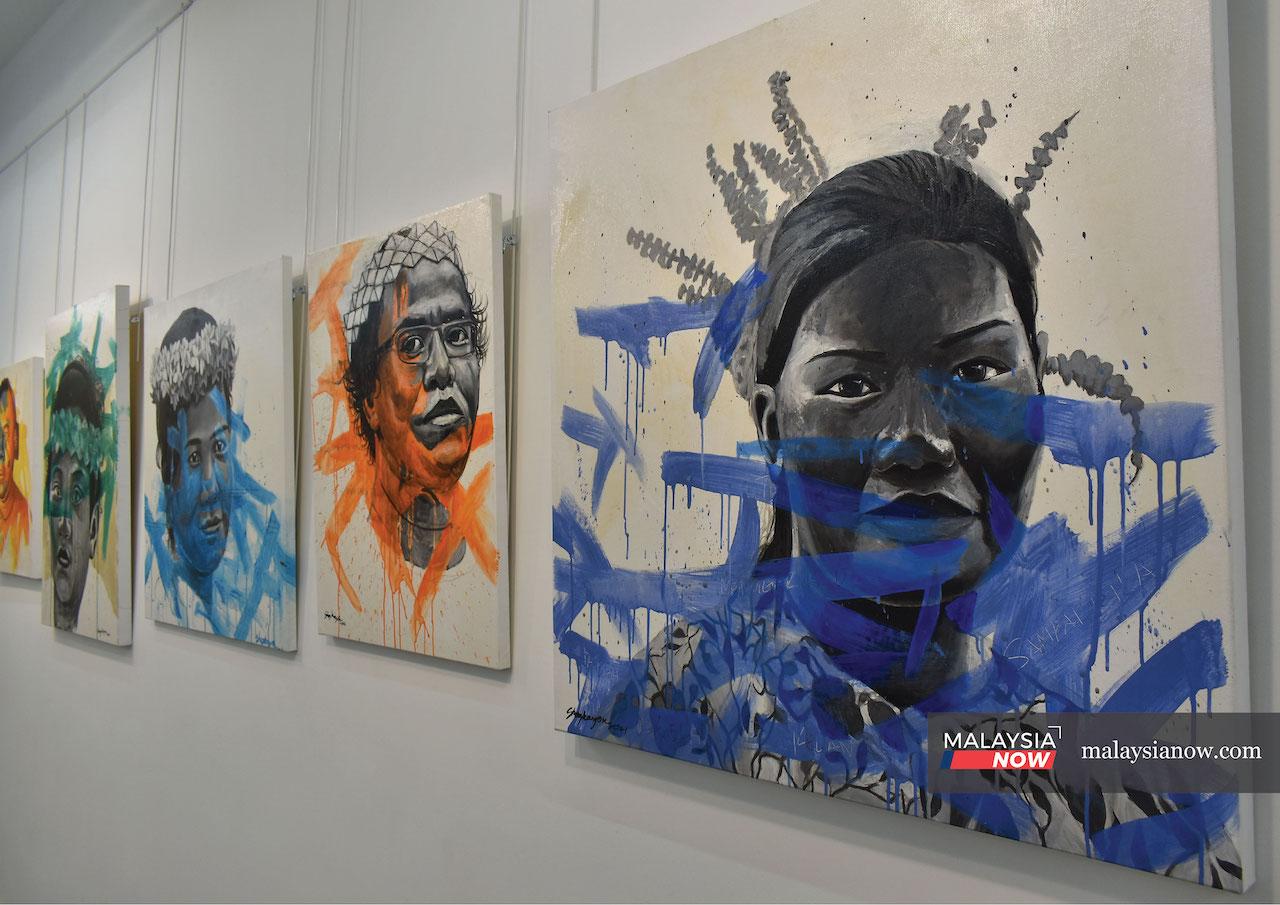At the intersection of art and activism
Orang Asli activist Shaq Koyok speaks of his drive to raise awareness about the rights of his community and the damage inflicted to their way of life throughout the years.
Just In
When Shaq Koyok decided to pursue a career in the fine arts, his passion was based on his identity as an Orang Asli.
He was barely nine years old when he saw the forest where he grew up, in Kampung Pulau Kempas, Banting, destroyed in the name of agriculture development.
“I was sad and angry,” he told MalaysiaNow. “It was 1994. I remember seeing the lorry carrying logs. I remember chainsaws and bulldozers. We got nothing but damaged roads and dust.
“The jungle we used to play in, where we used to find our food, was gone.”
It was a decade before the area was able to recover from the damage inflicted by the project. But its recovery was short-lived.
“In 2006, it happened again. They said it was for an agriculture project, but it was nothing,” Shaq said.
“They just wanted to log the forest and take the valuable wood.”
It is experiences such as these which drive his passion in art.

His most recent work, “Muted Colours”, is currently on exhibition at the Richard Koh Fine Art Gallery in Bangsar, Kuala Lumpur. A monochrome self-portrait on tikar mengkuang, a type of woven mat, the only splash of colour is a blotch of orange painted on his forehead.
Shaq said the painting captures his inability to speak up as an indigenous person.
“Orange represents the nightmares that I had,” he said. “At first I started with the mouth, then I erased it because I realised the Orang Asli are still silenced. They have no voice.”
The word “guilt”, formed out of linen, is glued to the painting. Shaq said this represents the guilt he feels about not doing enough for his people.
“I feel guilty because I cannot do much for the Orang Asli, especially because I live in the city now.
“I want to do more. It can be a word for me to motivate myself – by feeling this guilt, I want to do better than I did yesterday.”
“Muted Colours” is one of 19 artworks featured in what is Shaq’s fourth solo exhibition, “Land of A Thousand Guilts”. The aim of the exhibition is straightforward: to help people understand the dire situation which Orang Asli communities have faced for decades.

Shaq, from the Temuan community, favours portraits in his work. He often paints his friends or even strangers from his visits to Orang Asli villages.
While his subjects may come from different ethnic groups, they share the same pain and the same fight.
“This is the issue I want to highlight (in this exhibition),” he told MalaysiaNow.
“When we fight for our forests, it’s not just an environmental issue. It’s about our identity, our culture.
“We have the graves of our ancestors in the forests. If you destroy the forest, you are destroying our history.”
Tikar mengkuang
Shaq’s use of tikar mengkuang as his canvas instead of the normal linen fabric is also deliberate.
Tikar mengkuang is often used as mats in Orang Asli villages. But while it is a common enough sight, the art of weaving it is fading, forgotten by the younger generations.
Shaq is determined to change this.
The tikar mengkuang he uses is woven by his family members. “Sacred Sea Dance”, the largest portrait in the exhibition, is painted on a length woven by his mother.
“Painting on tikar mengkuang is not easy,” he said. “Basically you are painting on leaves, which means it’s hard for the colours to stick. It was very difficult.”
He recalled a visit to New Zealand where such mats are recognised as valuable artwork.
“They never called it a craft, like we do here. It’s a valuable art for them. It made me think, why don’t we have that appreciation for our work. It’s an everyday object – we step on it, we sleep on it.”
His goal is to help people appreciate the art of tikar mengkuang.
“Of course, linen canvas looks nice and clean but we have a valuable thing in our country here. It’s our traditional art.”
Social change
But at the very root of Shaq’s art is his zeal for activism.
“The goal of my art is always to fight for my people’s rights,” he said.

He remembers the discrimination he faced at secondary school for being different from everyone else. Some of his Orang Asli friends who faced the same treatment ended up dropping out.
“When people don’t understand us, they don’t know how to respect us,” he said.
“In Malaysia, there’s no syllabus in textbooks about Orang Asli. That’s where the discrimination problem starts.”
This is why he has no interest in “pretty abstract art that can look good in your house”.
He said many collectors had tried to commission him to produce artworks unrelated to the Orang Asli.
“I turned them down. As an activist, this is how I do my part.”
He acknowledges the limitations of his work, but remains hopeful that the people who see his art can learn more about indigenous people through it.
“That’s the most important thing to me.”
Subscribe to our newsletter
To be updated with all the latest news and analyses daily.
Most Read
No articles found.
